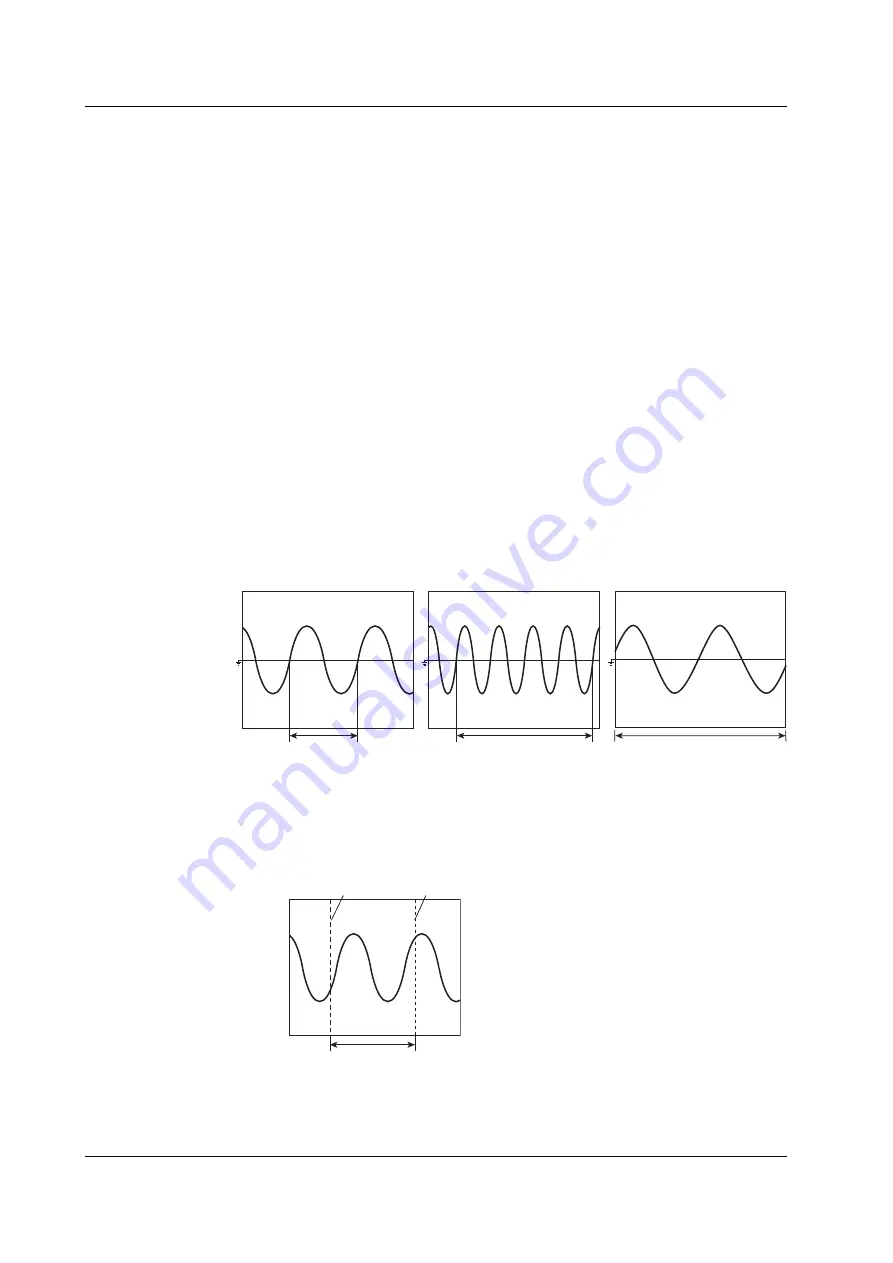
1-10
IM 253710-01E
Measurement/Computation Period «For procedures, see section 10.1.»
During normal measurement mode
There are three methods of selecting the period. The measurement/computation
period is set using one of the methods and the numerical data are measured or
calculated using only sampled data
*1
within the period
*2
.
*1 For information on the sampled data, see section 1.3 “Acquiring Data (Voltage and Current
Signals).”
*2 However, when the method of selecting the period is set to zero crossing, the numerical data
of the maximum values (Peak) of voltage and current are determined over the entire screen
(display record length). Thus, other measurement functions such as U+pk, U-pk, I+pk, I-pk,
CfU, CfI, FfU, and FfI that are determined from the maximum values of voltage and current
are also measured or computed over the entire screen.
• Zero crossing setting
The measurement/computation period is set to the period between the first point on
the screen where the reference input signal crosses the zero level (the center value
of the amplitude) on a rising slope* to the last point on the screen where the signal
crosses the zero level on a rising slope. When there is only one or there is no
rising slope on the screen, the measurement/computation period is set to the entire
width of the screen. When using the zero crossing setting, you can specify which
input signal to use to synchronize to the zero crossing point for each element. The
synchronizing signal can be selected as CH1 through CH8 or as the external clock.
*
Slope refers to the movement of the signal such as the movement from a low level to a
high level (rising) or the movement from a high level to a low level (falling).
Measurement/computation
period
Measurement/computation
period
Measurement/computation
period (Entire screen)
• Cursor setting
The measurement/computation period is set to the period between the two vertical
cursors placed on the screen (t1 - t2). You can set the measurement/computation
period while viewing the displayed waveform and moving the cursor.
Measurement/computation
period
Cursor 1
Cursor 2
t1
t2
1.2 Measurement Modes and Measurement/Computation Periods
















































